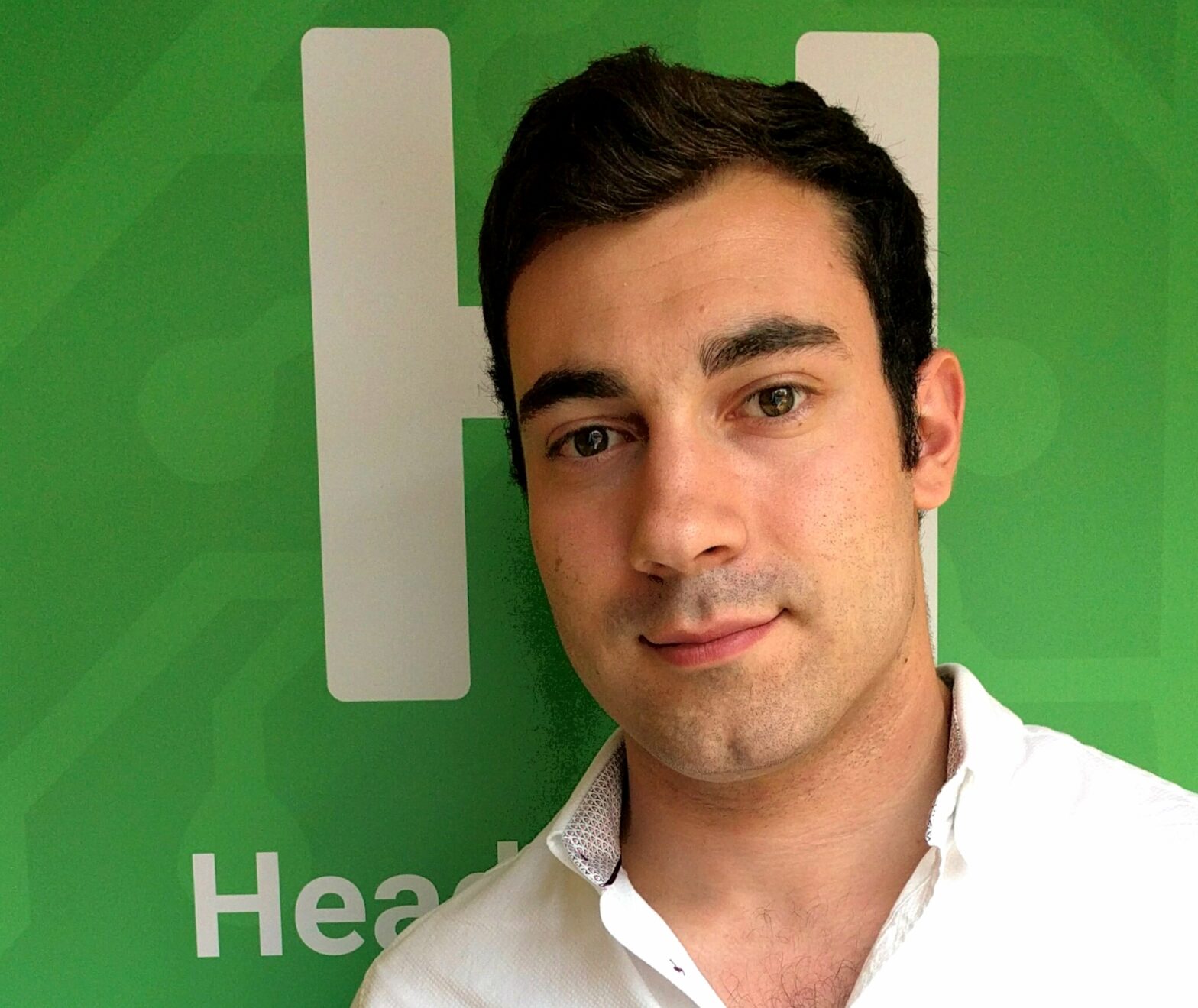Nicholas Shekerdemian was still in the middle of his undergraduate degree course at Oxford University when he launched his recruitment app, but that hasn’t slowed him down. His start-up, Headstart, is aimed at SMEs looking to compete cost effectively with large corporates for entry-level recruitment, using a mix of algorithms and artificial intelligence for vetting candidates.
Shekerdemian co-founded Headstart App with tech entrepreneur Jeremy Hindle last year, after having identified several problems smaller businesses face when it comes to recruiting recent graduates. Recognising how time-poor and cash-strapped smaller businesses can be, Shekerdemian envisioned an app that simplifies talent-spotting–cutting out large marketing budgets and hours spent trawling LinkedIn. Here’s how he started up.
What does your business do?
Headstart is a recruitment app that matches students from a range of backgrounds to opportunities at leading companies using a series of contextual and predictive algorithms. Students build a profile over time and use this to match with exciting roles at the click of a button; in many cases being fast tracked through the remainder of the process. Recruiters receive a ranked list of prospective candidates for each role who not only meet minimum grade requirements but who are also a good cultural fit.
Where did the idea for your business come from?
In 2014-15 I was on my year abroad, studying in Beijing, whilst at the same time running an online education company. I was coming to the end of my time in China, and many of my friends had landed internships at the big banks and law firms. I was under quite a lot of pressure to do the same. I began the process (even though my heart wasn’t really in it!) and quickly found the whole experience extremely repetitive and, in many ways, felt that it reduced me to being no more than a simple CV. My idea was that, if students can use a common application to apply to university, why could that not apply to entry-level jobs too?
How did you know there was a market for it?
I began doing market research on the student-side first. It didn’t take long to discover that I wasn’t alone in my negative experience of the application process; almost every student I spoke to found it time-consuming and stressful, particularly if they didn’t know what they wanted to do.
On the recruiter-side, it was a bit more difficult, as I was a 20 year old student with a very limited network. I started by reading research reports and, in particular, those of the Association of Graduate Recruiters. It wasn’t until I reached out on LinkedIn to Thomas Bucaille (currently SVP HR at Ralph Lauren and also now an investor in Headstart) that I really started to get genuine and real feedback from recruiters. Thomas helped us a lot in our early days, when we were trying to spec the product.
How did you raise funding, and why?
We raised SEIS and EIS seed funding via Angel investors. Some were through our personal network, others through Oxford’s alumni network and others through recommendation. This funding has enabled us to build and develop our initial apps, as well as to hire our team and move into offices. We’ll be raising further funding in 2017 to help us continue our rapid growth.
Describe your business model in brief.
Students don’t pay anything to use our recruitment app. We do not believe in charging students as that would potentially exclude a vast number of quality applicants who can’t afford a paid service.
Equally, we are trying to empower start-ups to compete for student talent so we do not currently charge them anything. This is not a freemium product however; start-ups have exactly the same functionality as large multi-nationals.
Larger SMEs and enterprises are on paid subscriptions (including a licensing fee) on the recruitment app. Price is determined by size and hiring volume.
What was your first big milestone and when did you cross it?
We’ve had a few huge milestones over the last six months. I think my favourite was when we landed our first paying enterprise client back in August, as this really confirmed to us that what we’d built was something people were willing to pay for. Some of the best advice we received early on was that free trials don’t mean anything; if someone actually wants your product and if you’ve correctly identified a pain point to solve for them, they’ll pay for it. If not, you’re likely a solution looking for a problem.
What advice would you give to other entrepreneurs?
Start early – there’s no such thing as lack of experience. If you start doing, you’ll learn quickly and improve. If you’re on the fence about doing something, it’s better just to do it than to spend too long thinking about doing it because, if you wait, the opportunity may pass.
Always listen first, then pitch. You were born with two ears and one mouth – if you use them in that ratio, you’ll do fine.
Where do you want to be in five years’ time?
I’d like to have led Headstart to becoming the go-to place for students globally to find career advice, match with roles and develop. I want our learning algorithms to be so advanced that we can educate young people about the enormous array of exciting opportunities available and give them a guided path to achieving those goals.
If you weren’t an entrepreneur, you would be…
I’d be doing my dissertation and stressing about revision for my Finals! I know which I’d rather be right now…
What is your philosophy on business or life, in a nutshell?
Be proactive, fail fast, and if you don’t ask, you don’t get!







